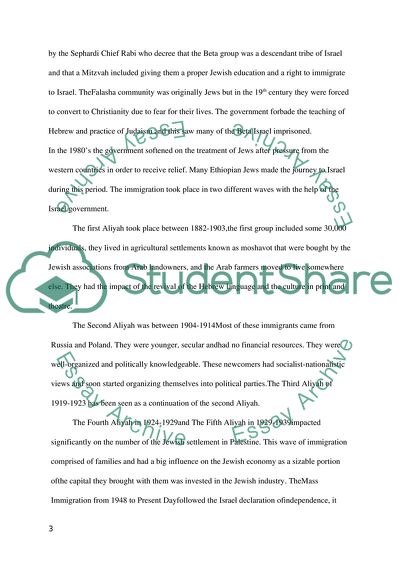Cite this document
(Organized Mass Immigrations from Ethiopia to Israel Essay, n.d.)
Organized Mass Immigrations from Ethiopia to Israel Essay. https://studentshare.org/social-science/1855597-study-one-of-the-organised-mass-immigrations-to-israel-since-the-establishment-of-the-state-describe-the-operation-involved-in-arranging-the-aliyah-and-the-particular-problems-facing-these-immigrants
Organized Mass Immigrations from Ethiopia to Israel Essay. https://studentshare.org/social-science/1855597-study-one-of-the-organised-mass-immigrations-to-israel-since-the-establishment-of-the-state-describe-the-operation-involved-in-arranging-the-aliyah-and-the-particular-problems-facing-these-immigrants
(Organized Mass Immigrations from Ethiopia to Israel Essay)
Organized Mass Immigrations from Ethiopia to Israel Essay. https://studentshare.org/social-science/1855597-study-one-of-the-organised-mass-immigrations-to-israel-since-the-establishment-of-the-state-describe-the-operation-involved-in-arranging-the-aliyah-and-the-particular-problems-facing-these-immigrants.
Organized Mass Immigrations from Ethiopia to Israel Essay. https://studentshare.org/social-science/1855597-study-one-of-the-organised-mass-immigrations-to-israel-since-the-establishment-of-the-state-describe-the-operation-involved-in-arranging-the-aliyah-and-the-particular-problems-facing-these-immigrants.
“Organized Mass Immigrations from Ethiopia to Israel Essay”. https://studentshare.org/social-science/1855597-study-one-of-the-organised-mass-immigrations-to-israel-since-the-establishment-of-the-state-describe-the-operation-involved-in-arranging-the-aliyah-and-the-particular-problems-facing-these-immigrants.


